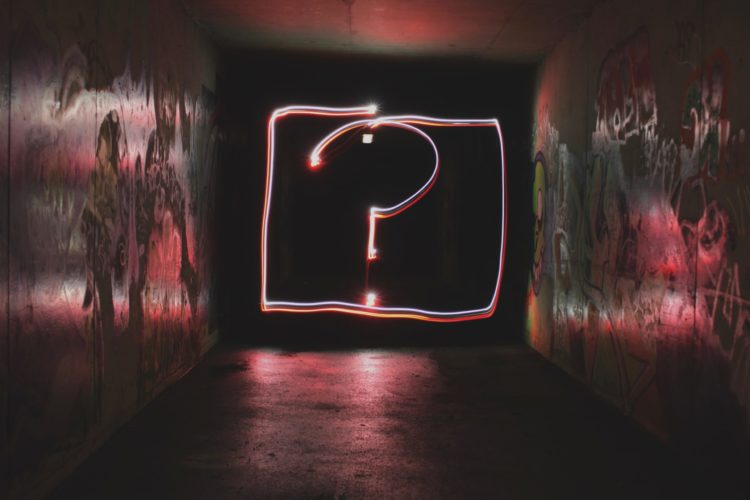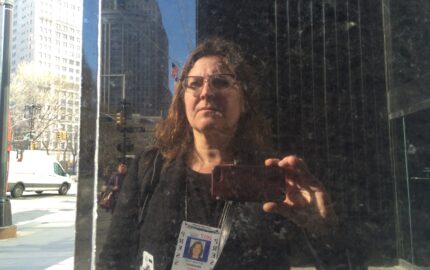Some core questions I have about the challenges facing journalists were revived by a few things I read last week. None were surprising, but all carried nagging concerns that date to the upheaval of the digital age. You might find the notes and my questions discouraging (although each of the stories was a quality read), but these are the times we are in. Ignoring reality has never seemed a very effective — or journalistic — way to live.
Paul Queary of the Washington Observer, which covers "politics, government and influence" in Washington state, wrote an elegy to the two "press houses" that long served as offices for reporters covering the state Legislature. As someone who covered legislatures in three states, I can attest that most Capitol press rooms are, at best, shabby — and yet the stuff of romance. Few were more so than the two shambling buildings in Olympia that drew lobbyists and legislators and activists like magnets. Those houses are being sold and the press corps moved into much smaller space in the Legislative Building. Closer to the action? Maybe. But Queary gives a concise accounting of the dwindling number of journalists who babysit state government. He cites the example of Sara Gentzler, who now covers the statehouse for all six McClatchy-owned newspapers in Washington — newspapers that each had their own correspondents not so long ago: "So she’s trying to do the work six people did back in the day."
Question: How do we convince the public what is at risk for them when there aren't enough of us to watch over power at play?
Seattle Times columnist Danny Westneat dug into stats this week on regions of Washington state where people are eager for COVID vaccines versus those where people are resistant. It's one more tale of the unsettling red/blue divide in America, with this comment from a data scientist: “The No. 1 correlating factor for whether you’ll get the vaccine is whether you voted for Trump."
But the paragraph that jumped out at me was based on a recent Economist survey. It noted that more vaccine resistors trust the former president for medical advice than they do the CDC or Dr. Anthony Fauci. And then this from the column: Trump did get vaccinated himself in January, but a majority of GOP voters told pollsters they hadn’t heard about that (nearly twice as many had heard the news about the Dr. Seuss books being pulled).
Question: How do we get people to engage in legitimate news coverage once they've disengaged?
Finally, an intriguing piece by Melissa Fay Greene for the Atlantic on how inaccurate our memories of the past pandemic year already are — and how much fuzzier they are likely to become. Her story weaves personal experience with deep reporting. Most friends I've talked to about the piece picked up on Greene's primary question: How do you remember the moment the pandemic began for you? But then she explores how faulty those pin-point memories usually are, and how people shape their own narratives into six primary storylines. (If you're as intrigued by story structure as I am, don't miss this piece.) It all paints a picture of the squishiness of memory.
Question: If memory is as unreliable and fungible as it sometimes seems, what does that mean for a profession that relies on it?
I've been listening to arguments for almost 20 years about how the press needs to respond to the challenges it faces in these times. Many of those challenges are financial; they affect our journalism in fundamental ways, but there are limits to what we, as journalists, can do about them. Not so the kind of questions I pose above, which sit at the heart of our work.
***
A version of this post first ran as a Storyboard newsletter on April 9, 2021.
Paul Queary of the Washington Observer, which covers "politics, government and influence" in Washington state, wrote an elegy to the two "press houses" that long served as offices for reporters covering the state Legislature. As someone who covered legislatures in three states, I can attest that most Capitol press rooms are, at best, shabby — and yet the stuff of romance. Few were more so than the two shambling buildings in Olympia that drew lobbyists and legislators and activists like magnets. Those houses are being sold and the press corps moved into much smaller space in the Legislative Building. Closer to the action? Maybe. But Queary gives a concise accounting of the dwindling number of journalists who babysit state government. He cites the example of Sara Gentzler, who now covers the statehouse for all six McClatchy-owned newspapers in Washington — newspapers that each had their own correspondents not so long ago: "So she’s trying to do the work six people did back in the day."
Question: How do we convince the public what is at risk for them when there aren't enough of us to watch over power at play?
Seattle Times columnist Danny Westneat dug into stats this week on regions of Washington state where people are eager for COVID vaccines versus those where people are resistant. It's one more tale of the unsettling red/blue divide in America, with this comment from a data scientist: “The No. 1 correlating factor for whether you’ll get the vaccine is whether you voted for Trump."
But the paragraph that jumped out at me was based on a recent Economist survey. It noted that more vaccine resistors trust the former president for medical advice than they do the CDC or Dr. Anthony Fauci. And then this from the column: Trump did get vaccinated himself in January, but a majority of GOP voters told pollsters they hadn’t heard about that (nearly twice as many had heard the news about the Dr. Seuss books being pulled).
Question: How do we get people to engage in legitimate news coverage once they've disengaged?
Finally, an intriguing piece by Melissa Fay Greene for the Atlantic on how inaccurate our memories of the past pandemic year already are — and how much fuzzier they are likely to become. Her story weaves personal experience with deep reporting. Most friends I've talked to about the piece picked up on Greene's primary question: How do you remember the moment the pandemic began for you? But then she explores how faulty those pin-point memories usually are, and how people shape their own narratives into six primary storylines. (If you're as intrigued by story structure as I am, don't miss this piece.) It all paints a picture of the squishiness of memory.
Question: If memory is as unreliable and fungible as it sometimes seems, what does that mean for a profession that relies on it?
I've been listening to arguments for almost 20 years about how the press needs to respond to the challenges it faces in these times. Many of those challenges are financial; they affect our journalism in fundamental ways, but there are limits to what we, as journalists, can do about them. Not so the kind of questions I pose above, which sit at the heart of our work.
***
A version of this post first ran as a Storyboard newsletter on April 9, 2021.



